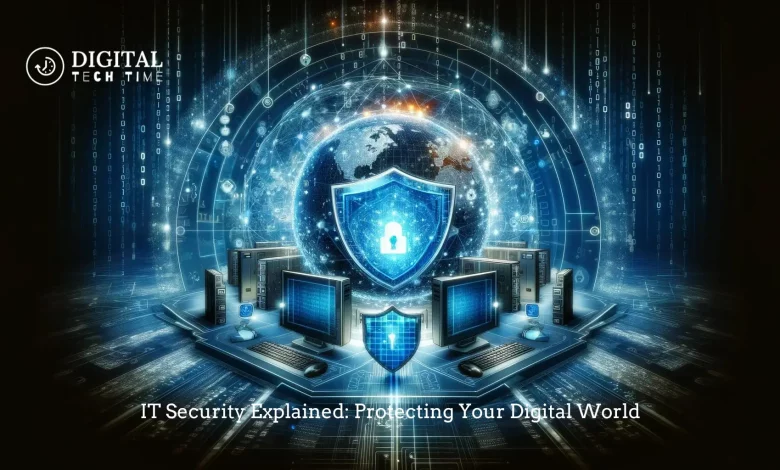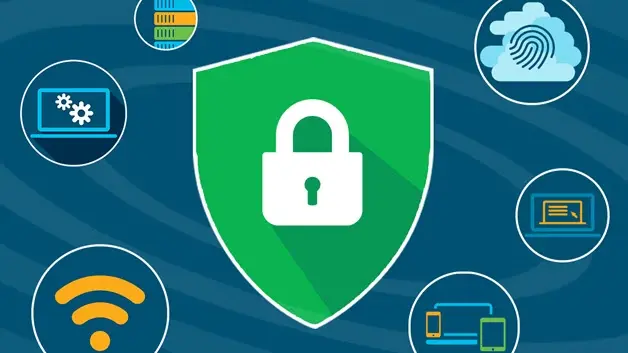Unlocking the Secrets of IT Security: Safeguarding Your Digital World

IT security is crucial in safeguarding organizations’ digital assets from cyber threats in today’s digital age. It encompasses a wide range of strategies and technologies, from protecting sensitive data to ensuring uninterrupted access to systems and networks. This comprehensive guide will delve deep into IT security, exploring its importance, types, common threats, and best practices to keep your digital world safe.
Table of Contents
Understanding IT Security
IT security, short for information technology security, refers to protecting an organization’s IT assets, including computers, networks, digital devices, and data, from unauthorized access, data breaches, cyberattacks, and other malicious activities. The primary goal of IT security is to ensure the confidentiality, integrity, and availability (CIA triad) of digital information and resources.

Types of IT Security
- Identity SecurityMethods and processes for identifying, verifying, and authorizing machines, devices, users, and applications.
- Identity and access management (IAM) must control sensitive information access.
- Network SecuritySecuring on-prem networks, WAN, and the Internet to prevent unauthorized access and detect cyber threats.
- Involves network segmentation, secure transport, access control, and content inspection.
- Cloud SecurityProtecting cloud-based infrastructure, applications, and data from external and internal cyber threats.
- Includes solutions for IaaS, PaaS, and SaaS security to ensure the security of cloud environments.
- Endpoint SecuritySecuring end-user devices, such as desktops, laptops, mobile devices, and IoT devices, from cyber threats.
- Involves device compliance, threat prevention, and endpoint detection and response (EDR) capabilities.
- Application and API SecuritySecuring applications and APIs through code review, analysis, and runtime analytics to prevent vulnerabilities.
- It is integrated into CI/CD pipelines as part of Shift Left Security and DevSecOps initiatives.
- Management: deploying and managing a range of security solutions to ensure adequate protection of IT assets.
- Involves device configuration, monitoring, optimization, automation, and orchestration for enhanced security.
- Visibility and Incident ResponseMaintaining visibility into network activities, ingesting threat intelligence, and responding to cyber threats effectively.
- Includes forensics, threat hunting, and threat mitigation to minimize the impact of security incidents.
Common Threats to IT Security
- Vulnerability Exploitation Cybercriminals exploit software vulnerabilities to launch attacks and gain unauthorized access to IT assets.
- Includes network-based attacks and malware infections targeting vulnerable systems.
- Account TakeoverAttackers steal account credentials through phishing and social engineering attacks to gain unauthorized access.
- Used to steal sensitive data, conduct fraudulent activities, and launch further cyber attacks.
- Financially-Motivated Attacks Cybercrime activities aimed at financial gains, such as ransomware, data exfiltration, and DoS attacks.
- Target organizations’ critical assets and demand ransom payments or extort money through cyber threats.
- Advanced Persistent Threats (APTs)Sophisticated threat actors backed by nation-states or organized crime groups launch targeted attacks.
- Exploit supply chain vulnerabilities and conduct long-term espionage to steal sensitive information.
- Poor Security PracticesLax security configurations, weak access controls, and the use of default credentials expose IT assets to cyber threats.
- Common in both on-premises and cloud-based environments, leading to security breaches and data leaks.

Best Practices for IT Security
- Implement Strong Access Controls: Enforce least privilege access and role-based access control (RBAC) to limit user permissions.
- Use multi-factor authentication (MFA) to enhance user authentication and prevent unauthorized access.
- Keep Software and Systems Updated. Security patches and updates are regularly applied to address known vulnerabilities and mitigate security risks.
- AutomateAutomated patch management tools will streamline the update process and ensure timely protection.
- Educate employees on security awareness. Provide comprehensive security awareness training to employees to recognize and report cyber threats.
- Raise awareness about phishing scams, social engineering tactics, and best practices for data protection.
- Deploy Robust Endpoint ProtectionUse endpoint security solutions to protect devices from malware, ransomware, and other cyber threats.
- For comprehensive protection, implement device encryption, data loss prevention (DLP), and mobile device management (MDM).
- Monitor and Analyze Network Traffic Utilize network security tools to monitor and analyze network traffic for signs of suspicious activity.
- Implement intrusion detection and prevention systems (IDS/IPS) to detect and block malicious traffic in real time.

FAQs about IT Security
Q: What are the three basics of IT security?
A: Three basic security concepts important to information on the internet are confidentiality, integrity, and availability. Concepts relating to the people who use that information are authentication, authorization, and nonrepudiation.
Q: What is security in it?
A: IT security is a set of cybersecurity strategies that prevents unauthorized access to organizational assets such as computers, networks, and data. It maintains the integrity and confidentiality of sensitive information,
Q: What is the aim of security?
A: Overview of goals of security: Confidentiality, Integrity, and Availability.
Conclusion
In conclusion, IT security is critical in protecting organizations’ digital assets from cyber threats in today’s interconnected world. Organizations can safeguard their digital future and ensure business continuity by understanding the importance of IT security, implementing best practices, and staying vigilant against evolving cyber threats. Remember, investing in IT security is not just a measure of protection but a strategic investment in the resilience and success of your organization in th
Related Artical





